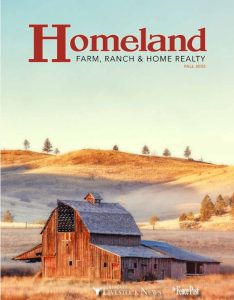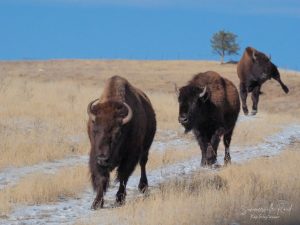FAQ: What do I need to know about buying beef from a rancher?

How much meat can I expect to get?
The average ready-to-butcher animal weighs 1,300 pounds. This can vary a lot, depending on breed, finishing and management of the producer marketing the animal.
Once the animal is butchered and hide, head and internal organs removed, it usually weighs about 62 percent of the live weight. This is called the hanging weight. On that 1,300 pound animal that would be about 806 pounds.
Most producers figure the quarter/half/whole price based on the hanging weight.
After the beef hangs and ages for two to three weeks, which tenderizes and develops flavor in the meat (and also shrinks a little as some of the water evaporates) the carcass is broken down further, and excess bone, connective tissue and fat is removed.
About 21 percent of the hanging weight is removed in this process, leaving about 637 pounds of edible meat from a whole animal.
So, if you pay (for example) $3.25 a pound, figured on hanging weight, the actual price per pound will be about $4.11, if it processes according to the averages. Most custom meat processors charge from $.70 to $.90 per pound, hanging weight, to process, so you’ll be looking at about $5.12 total, per pound for processed beef.
Keep in mind that includes all steaks, hamburger, roasts, ribs, etc.
How much of that will be hamburger?
How much hamburger you get depends somewhat on how you order it. Hamburger comes from the parts of the animal that are too tough or difficult to cook, or are too small to cook as steaks or roasts. If you don’t cook roasts or flat iron steaks, for example, you can ask to have those ground. If you don’t ask for any special cuts, on average, about 38 percent of the edible portion of the animal will be ground into hamburger. So on our average 637-pound animal, you’d expect about 242 pounds of hamburger.
Can I buy just hamburger?
Maybe. Some people may be selling animals that are older and less tender than a typical butcher animal, and may be most suitable for hamburger, rather than cutting into steaks and roasts. In that case, unless they’re labeled for resale, those animals would need to be sold by the half or quarter as well.
What is “hanging weight”?
Hanging weight is how much the carcass weighs after it’s skinned and the head and internal organs are removed. This is usually about 62 percent of the live weight of the animal, and what most private beef sellers base their per-pound cost on.
The butcher shop wants “cutting orders.” What does that mean?
“Cutting orders” are how you want your meat cut and packaged. This includes how much fat you want in your burger (standard is usually 85% lean), how thick you want your steaks, how much hamburger you want in a package (usually 1-2 pounds) how many steaks per package, whether you want round steaks tenderized, cubed or left alone, what size you want the roasts, whether you want the ribeye as steaks or roasts. There are a lot of questions, and many processors have a “cut sheet” they ask the customer to fill out in person, or over the phone. You can also decide if you want the organ meats, like the liver, heart and tongue, plus soup bones, ox tail and tallow (extra fat they trim off).

BEEF-SAMPLE-CUTTING-FORM
If I want just a quarter of beef, how do I know what cuts I’m getting?
Most people sell halves and quarters as half or a quarter of all the meat, rather than the front quarter or back quarter. In many cases, though, it’s difficult to customize cutting orders by the quarter, so you may have to work with the person buying the other quarter to figure out what the cutting orders will be.
If people are upset at packers, why don’t they sell all their beef privately?
The limiting factor in getting beef from producers to consumers is converting it from animals to meat. There are a small number of small, custom meat processors, who were usually booked two to three months out. In many cases right now, that timeline is closer to five and six months, or more. For most processors, they’re limited by the workforce. Many of them struggle to find reliable, skilled meat cutters.
What is the difference between grass fed and grain fed?
Grass fed animals are typically never confined, and fed a diet of strictly grass and hay or silage for their entire lives, resulting in meat that tends to be leaner, with less marbling. Grass-fed animals often have to be fed longer to achieve the same size as grain-fed animals, or they are butchered at a lower weight, but that varies by producer.
Grain-fed animals are usually raised on grass and hay, then fed corn, sugar beets, distillers grains or other feedstuffs to add fat and marbling to the meat.
The choice between grass-fed and grain-fed beef is a matter of preference and availability.
Why do I have to buy it by the quarter, instead of by the package or pound?
In order to sell beef by the package, or to retailers or restaurants, beef has to be inspected by a state or federal inspector, and specially-labeled. The availability of those inspectors is one of the issues, and many producers haven’t gone through the process to be approved to sell meat by the pound.
When producers sell meat as a half or quarter, the buyer is technically buying the animal, rather than the meat, which enables them to bypass the inspection. There is no difference in how the meat is cut or prepared by the meat processor—food safety is not in question with or without the inspector.
For more information about how to sell meat on a retail basis in South Dakota, check out the SDSU Extension website at https://extension.sdstate.edu/regulatory-requirements-selling-meat-farmers-markets
I’ve never heard of some of these cuts of meat. What do I do with them?
The Beef Checkoff has put together some great beef recipes and information about how to cook all kinds of beef. You can visit their website at https://www.beefitswhatsfordinner.com/
Why does it take so long to get my meat once the animal is dropped off to butcher?
Beef is typically aged for 14-21 days. This develops the flavor and helps break down the connective tissue, making it more tender.
How much space will it take in my freezer?
Generally, one cubic foot of freezer space will hold 35-40 pounds of packaged meat. For that 637 pounds of beef, if you take a quarter of it (160 pounds), you’ll need about 5 cubic feet of freezer space. That varies by freezer configuration and how the meat is packaged.
Why is some meat labeled “not for sale”?
Meat that has not been processed through a Federal or State inspected processing facility cannot legally be sold directly to consumers. It can be used by the animal owner and guests, which is why producers have to sell the “animal,” by the half or quarter, rather than the meat by the pound. Meat that is processed by these “exempt” plants, that are not inspected, is labeled “not for sale.”
Is it better to vacuum seal or wrap meat in paper?
Wrapping meat in paper is usually less expensive. Most places wrap the meat in plastic first, then in paper, which helps prevent freezer burn. Vacuum sealing can extend the freezer life of your meat, since it reduces the meat’s exposure to oxygen, which causes freezer burn.
How long will meat last in the freezer?
The USDA recommends eating frozen roasts and steaks within four to 12 months. Ground beef is best within three to four months. However, those are guidelines for best quality. There is no safety issue with eating meat that has been in the freezer longer than that. As long as it is kept frozen and securely wrapped, beef should be good to the upper end of those recommendations, or beyond.









